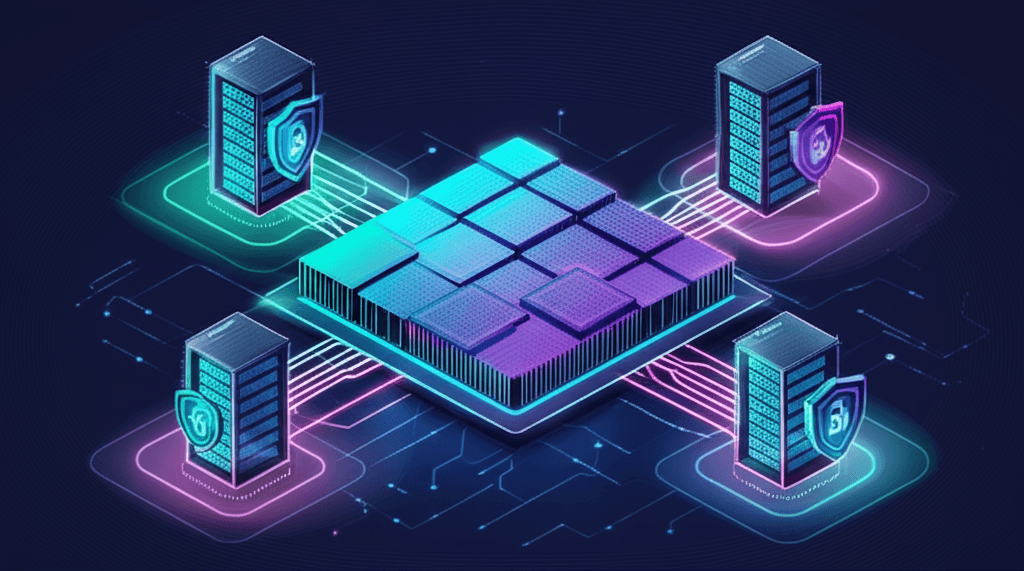AI2's FlexOlmo Enables Collaborative AI Without Sharing Sensitive Data
AI2's FlexOlmo revolutionizes LLM training, enabling powerful shared models without ever exposing sensitive, proprietary data.
July 20, 2025

The Allen Institute for AI (AI2) has introduced a new paradigm for training large language models (LLMs) called FlexOlmo, which allows multiple organizations to build a powerful, shared model without ever exposing their sensitive, proprietary data.[1][2] This innovative approach addresses a fundamental bottleneck in AI development: the tension between the need for vast, diverse datasets and the critical importance of data privacy and control.[1] For industries like healthcare, finance, and the public sector, where data is often siloed due to regulatory and intellectual property concerns, FlexOlmo presents a groundbreaking solution for collaborative AI development.[1][3] The framework not only protects raw data by keeping it localized but also provides unprecedented control to data owners, allowing them to dynamically opt-in or out of the model's use and receive attribution for their contributions.[1][4]
At its core, FlexOlmo leverages a sophisticated architecture known as a Mixture-of-Experts (MoE).[1][3][5] The process begins with a shared public model, referred to as an "anchor," which is pre-trained on publicly available data.[6] Individual organizations then take this anchor model and, within their own secure environments, train a specialized "expert" module using their private datasets.[3][7] These expert modules are essentially specialized neural networks that learn the nuances of a specific domain. Once trained, only the expert module—not the underlying private data—is contributed back to be integrated into the larger FlexOlmo model.[1][8] This modular design means that the training can happen asynchronously, with different organizations contributing their experts at different times without needing to retrain the entire system from scratch.[8][4] A key innovation is a domain-informed routing mechanism that intelligently directs queries to the most relevant expert(s) during inference, ensuring the combined model can effectively harness the specialized knowledge of each contributor.[8][6]
This method stands in stark contrast to traditional AI development, where all data must be pooled into a centralized dataset for a one-time, irreversible training process.[1] That standard approach forces data owners to relinquish control, provides no mechanism for later opting out, and makes attribution nearly impossible.[1][6] FlexOlmo is also a significant evolution from existing privacy-preserving techniques like federated learning. While federated learning allows for local training, FlexOlmo differs fundamentally by enabling organizations to train in complete isolation and asynchronously, offering a more flexible and robust guarantee for data opt-out at any time.[1][3] This capability to deactivate a specific expert module, effectively removing a dataset's influence from the model's future outputs, is a crucial feature for data owners concerned about long-term data governance.[1][4] A magazine publisher, for instance, could contribute its archive to train an expert and later retract that module if a legal dispute arises or if it objects to a particular use of the model.[4]
The performance of FlexOlmo has proven to be highly effective, demonstrating that this privacy-first approach does not come at the cost of capability. Researchers at AI2 conducted extensive evaluations using models with up to 37 billion parameters, with 20 billion active at any given time.[5][9] They curated a special dataset called FlexMix, which includes public data alongside seven domain-specific datasets meant to simulate realistic private data scenarios.[5][10] The results were compelling: FlexOlmo showed a 10.1% improvement in accuracy compared to previous model merging techniques and a remarkable 41% relative improvement over the base public model across 31 different tasks.[5][10] In fact, its performance is close to that of a model trained centrally with all data shared, a significant achievement for a decentralized system.[8] The most substantial gains were seen in tasks directly related to the specialized knowledge contained within the private datasets, proving the MoE architecture's ability to effectively combine the strengths of each expert.[5] Security evaluations also indicated a very low risk of extracting the original training data from the final model.[8]
The implications of FlexOlmo for the broader AI industry are profound. By removing the all-or-nothing barrier to data contribution, it opens the door for unprecedented collaboration.[1] Hospitals and pharmaceutical companies, for example, could pool their knowledge to create advanced diagnostic or drug discovery models without violating patient privacy regulations like HIPAA.[3][11] Financial institutions could collaborate on sophisticated fraud detection models without sharing sensitive customer data.[1] This new framework empowers data owners, giving them the confidence to contribute to the open, shared language model ecosystem on their own terms.[6] It marks a pivotal shift towards a future where the development of powerful and responsible AI does not require a compromise on the fundamental values of data privacy, control, and ownership.[1][12] As AI becomes more integrated into every facet of society, approaches like FlexOlmo will be critical in building a trustworthy and equitable AI-powered future.
Sources
[1]
[4]
[5]
[8]
[9]
[10]
[11]